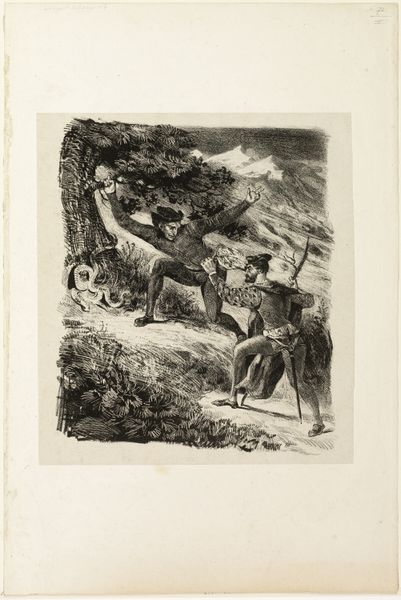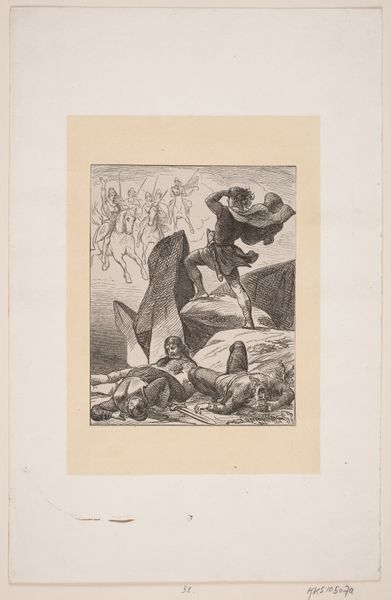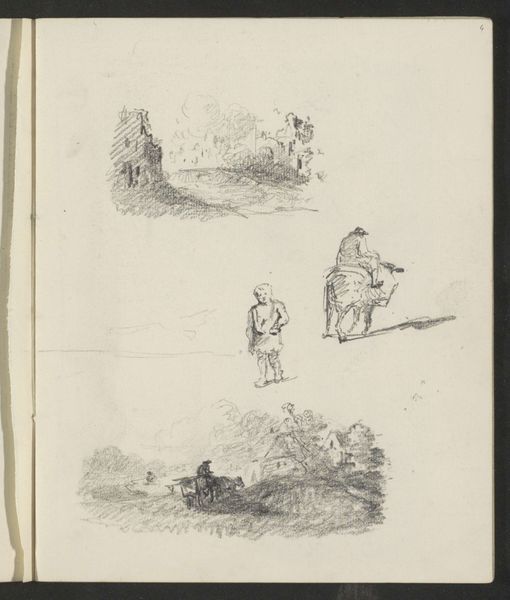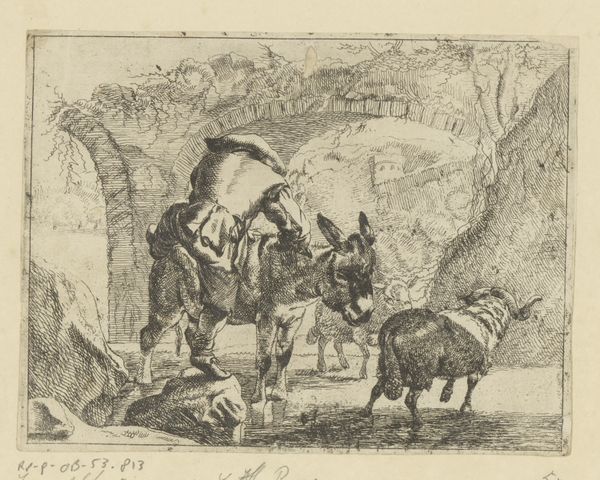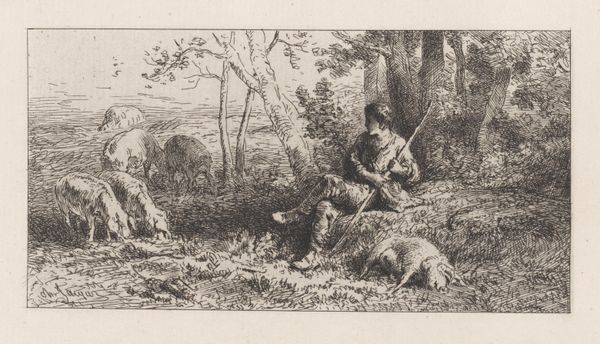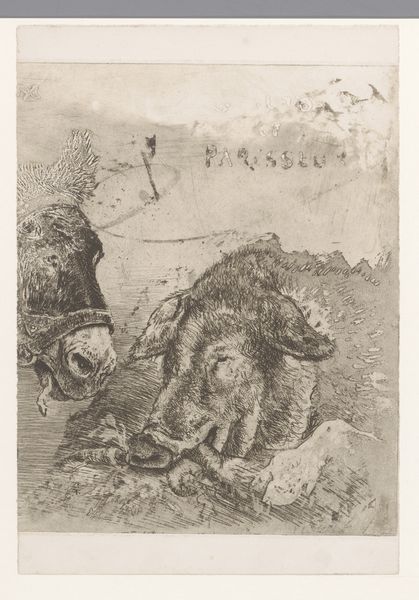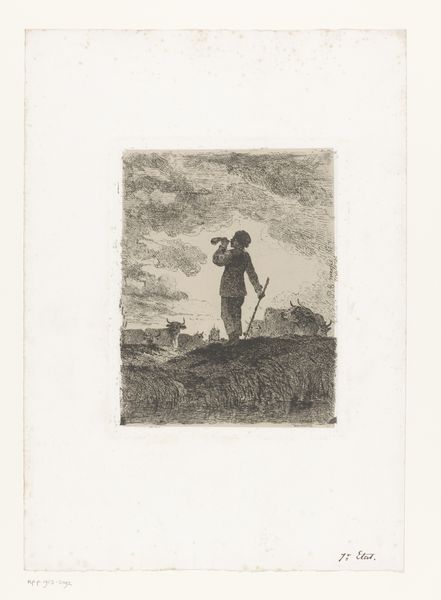
Illustration til Poul Martin Møller, "Sct. Laurentius" 1887 - 1889
0:00
0:00
drawing, print, etching
#
drawing
#
narrative-art
# print
#
etching
#
charcoal drawing
#
figuration
#
pencil drawing
#
line
Dimensions: 238 mm (height) x 193 mm (width) (billedmaal)
Curator: Looking at this etching, what's your immediate impression? Editor: Ominous. The sharp lines and contrast create a palpable sense of dread. There is an uncanny and distorted figure at the bottom that fills me with fear. Curator: You've zeroed in on what makes this piece so striking. It's an illustration by Waldemar Böhme, likely made between 1887 and 1889, intended for Poul Martin Møller's "Sct. Laurentius." Böhme was contributing to the visual culture of the time, using printmaking as a mode of distribution. Editor: What strikes me formally is the division of space. There are the kneeling people at the top. It almost feels like looking up into an overcast sky with dark silhouettes resting against the light. Whereas at the bottom there is almost a sense of descent, like this action is happening below ground. What's going on there? Curator: Indeed. Böhme visualizes a narrative, showing on top, Laurentius in grief, with his tormentors torturing Christians. Laurentius himself is subjected to further pain as we can see in the etching below. Böehme reflects anxieties about faith and doubt prominent in the era's intellectual and artistic circles. This print was a cultural product meant for wide dissemination. Editor: The formal components, the light, line and tone all amplify this. Böhme's hatching creates deep shadows and textural complexity that lends drama. Even the figures themselves, grotesque and exaggerated. There's something incredibly expressive. Curator: Absolutely, it reflects the artistic and societal values of the late 19th century in Denmark, a time marked by rapid social change, political reform and debates. The subject matter hints at societal power structures as well, it underscores the tension between piety and the disturbing realities of religious violence. Editor: For me the raw visual impact remains. How line becomes form, and emotion. Böhme uses form as its own language here. Curator: And in its time it played a part in a larger dialogue of faith, reform, and doubt. Editor: Indeed, Böhme and Møller have truly created a bleak, dramatic, unforgettable creation.
Comments
No comments
Be the first to comment and join the conversation on the ultimate creative platform.


